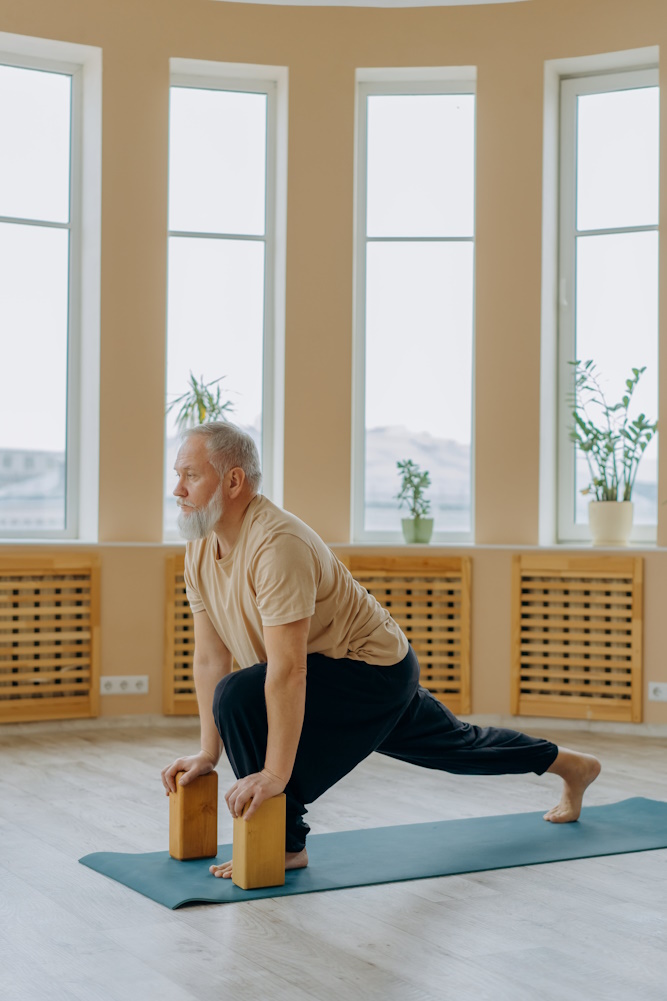Seniors, like individuals of any age, can benefit immensely from incorporating Pilates into their fitness routines. Pilates offers a low-impact, adaptable, and effective way for seniors to enhance their strength, flexibility, balance, and overall well-being. In this guide, we’ll delve into the numerous advantages that Pilates offers for seniors and explore the adaptations that make it a safe and enjoyable exercise method for older adults.
What are the benefits of Pilates for seniors?
Pilates provides a wide array of benefits for seniors, promoting physical health, mental well-being, and enhanced quality of life. Here are some of the key advantages:
1. Improved Flexibility: Pilates incorporates dynamic stretching exercises that enhance joint mobility and flexibility, helping seniors maintain a full range of motion.
2. Enhanced Strength: Pilates targets both large and small muscle groups, promoting functional strength and stability, which is crucial for seniors in their daily activities.
3. Better Posture: Pilates emphasizes proper alignment and body awareness, aiding seniors in improving their posture and reducing the risk of musculoskeletal issues.
4. Balance and Coordination: Pilates exercises focus on balance and coordination, reducing the risk of falls, which is a common concern for older adults.
5. Pain Management: Many seniors experience chronic pain conditions. Pilates can help alleviate pain by strengthening supporting muscles and improving body mechanics.
6. Stress Reduction: Pilates incorporates mindful breathing and relaxation techniques, reducing stress levels and promoting mental well-being.
7. Increased Energy: Regular Pilates practice can boost energy levels, allowing seniors to stay active and engaged in their daily lives.
Is Pilates good for 70-year-olds?
Absolutely, Pilates is suitable and highly beneficial for 70-year-olds and beyond. In fact, Pilates is often recommended for older adults due to its adaptability and gentle nature. Here’s why it’s an excellent choice:
1. Low Impact: Pilates is gentle on the joints, making it safe for seniors even if they have arthritis or other joint issues.
2. Adaptable: Pilates exercises can be adapted to accommodate individual fitness levels and physical limitations, ensuring a personalized and safe workout.
3. Core Strength: Maintaining core strength is essential for seniors, and Pilates is renowned for its focus on core stability.
4. Mind-Body Connection: Pilates enhances body awareness and mindfulness, which is particularly valuable for seniors as it can help prevent injuries and falls.
5. Social Interaction: Group Pilates classes provide opportunities for social interaction, combating feelings of isolation or loneliness, which can affect seniors.
How seniors can benefit from adopting an exercise regimen?
Adopting an exercise regimen, including Pilates, is a proactive step that seniors can take to maintain their physical and mental well-being. Here’s how seniors can benefit from regular exercise:
1. Enhanced Physical Health: Regular exercise can help manage chronic conditions such as diabetes, heart disease, and hypertension. It also supports a healthy weight.
2. Mental Well-Being: Exercise releases endorphins, which boost mood and reduce symptoms of depression and anxiety.
3. Improved Cognitive Function: Physical activity has been linked to better cognitive function and a lower risk of cognitive decline in older adults.
4. Social Engagement: Group exercise classes, like Pilates, offer opportunities for social interaction, reducing feelings of loneliness and isolation.
5. Independence: Maintaining strength, balance, and flexibility through exercise can help seniors stay independent and perform daily tasks with ease.
How often should seniors do Pilates?
The frequency of Pilates sessions for seniors can vary depending on individual fitness levels, goals, and any underlying health conditions. However, a general guideline for seniors is to aim for at least two to three Pilates sessions per week. This regularity allows for gradual progress while providing enough rest and recovery time between sessions.
It’s essential to start slowly, especially if you’re new to Pilates or exercise in general. Begin with shorter sessions and gradually increase the duration and intensity as your body adapts. Moreover, always consult with a healthcare professional or a certified Pilates instructor to ensure that your exercise plan is safe and appropriate for your specific needs and abilities.
In summary, Pilates is a fantastic exercise option for seniors, offering numerous physical and mental benefits. With its adaptability and focus on safety, seniors can enjoy improved flexibility, strength, balance, and overall well-being through regular Pilates practice. Adopting a consistent exercise regimen can enhance the quality of life for seniors, enabling them to stay active, healthy, and engaged well into their golden years.
